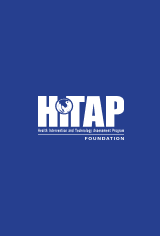Cost-utility analysis of 10- and 13- valent pneumococcal conjugate vaccines in Thailand

Cost-utility analysis of 10- and 13- valent pneumococcal conjugate vaccines in Thailand
About Project
A model-based economic evaluation was performed to estimate costs as well as outcomes of vaccination with PCV10 and PCV13 compared to ‘no vaccination’. This study considered two commonly recommended regimens: two-dose primary series at 2 and 4 months of age plus a booster dose at age 13 months (2+1) and three-dose primary series at 2, 4 and 6 months of age plus a booster dose at age between 12 to 15 months (3+1).
Objective This study aims to evaluate the costs and outcomes of offering the 10-valent pneumococcal conjugate vaccine (PCV10) and 13-valent pneumococcal conjugate vaccine (PCV13) in Thailand compared to the current situation of no PCV vaccination.
Methods Two vaccination schedules were considered: two-dose primary series plus a booster dose (2+1) and three-dose primary series plus a booster dose (3+1). A cost-utility analysis was conducted using a societal perspective. A Markov simulation model was used to estimate the relevant costs and health outcomes for a lifetime horizon. Costs were collected and values were calculated for the year 2010. The results were reported as incremental cost-effectiveness ratios (ICERs) in Thai Baht (THB) per quality adjusted life year (QALY) gained, with future costs and outcomes being discounted at 3% per annum. One-way sensitivity analysis and probabilistic sensitivity analysis using a Monte Carlo simulation were performed to assess parameter uncertainty.
Results Under the base case-scenario of 2+1 dose schedule and a five-year protection, without indirect vaccine effects, the ICER for PCV10 and PCV13 were THB 1,368,072 and THB 1,490,305 per QALY gained, respectively. With indirect vaccine effects, the ICER of PCV10 was THB 519,399, and for PCV13 was THB 527,378. The model was sensitive to discount rate, the change in duration of vaccine protection and the incidence of pneumonia for all age groups.
Conclusions At current prices, PCV10 and PCV13 are not cost-effective in Thailand. Inclusion of indirect vaccine effects substantially reduced the ICERs for both vaccines, but did not result in cost effectiveness.
Research Team
Related Organizations/
Supporting Organizations







